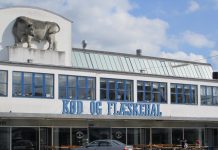
Recovery of the local level in food policy. In the current industrial food system local and regional supply structures have lost their relevance . Following the disappearance of the local food system, local food policy disappeared as well. Due to new challenges including rising problems on the local level and market failures concerning environmental and health issues, local food policy is becoming necessary again. Especially in the US urban and regional planning is seen as a part of this policy.
Problems of the food system. An individual’s time and effort for dealing with his or her nutrition is declining, while the costs for the society remain high. Time and effort have been externalized and this has become an important factor in the use of resources and the environment. At the same time malnutrition is a mass phenomenon. Obesity is its most telling criterion: more than 50 % of Germans are overweight. Furthermore, food and nutrition also have a social dimension: whether someone is following a healthy or unhealthy diet is also determined by the social status and the level of education.
The food system’s opportunities. The engagement with food issues opens new development perspectives for cities. Urban Agriculture deals with issues of civic participation, new forms of adoption and use of space, trying new work- and lifestyles. Consumers, institutions and politicians are attempting to regain influence on their food supply by regionalising food systems. The pledge for responsible consumption is usually the first step, when it comes to transforming food systems. However, for fundamental changes in food systems a more holistic citizenship is needed: a form of political citizenship with civic engagement and knowledge of the food system – and a city, which is supporting this and is setting the right framework conditions.
The food system’s opportunities for urban planning. The food system affects our cities in social, economic and urban design dimensions. Influencing the food system through urban planning has potentials far beyond food, as this touches upon core matters of urban development. Urban planning has not only the potential to solve problems within the food system, moreover, the food system can be used as an instrument of urban planning.
Food planning for an urban food system. In order to develop the city, food planning aims to influence the food system by spatial and programmatic measures. The food planning tasks range from evaluating the situation, developing a ‘Leitbild’ This includes responsibilities of information, co-ordination and facilitation of spatial planning. Urban planning can consider food in dedicated food plans, by integrating food as a specific issue in spatial development programs and by taking account of food in any planning decision.
Kompletter Aufsatz: eBook / PDF-Download
Kurzfassung: HTML / PDF-Download
English Abstract: HTML / PDF-Download
Fragenwolke: PNG / PDF
PHOTOCREDIT: ~ Pil ~ | CC BY-NC-ND 2.0




